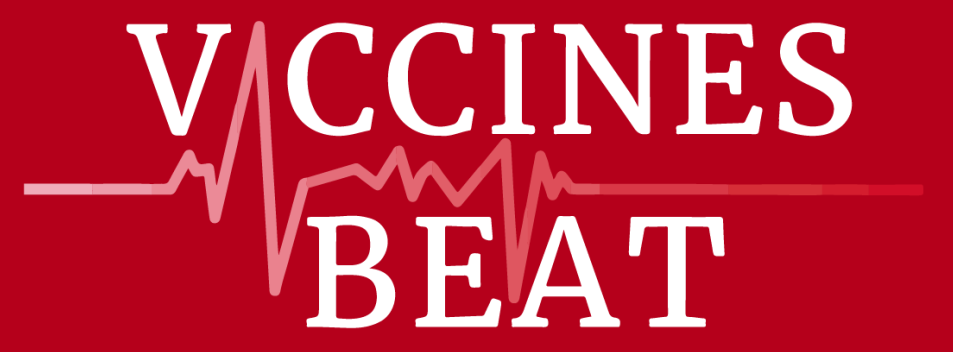Wahid M, Mandal RK, Sikander M, Khan MR, Haque S, Nagda N, Ahmad F, Rodriguez-Morales AJ. Safety and Efficacy of Repurposed Smallpox Vaccines Against Mpox: A Critical Review of ACAM2000, JYNNEOS, and LC16. J Epidemiol Glob Health. 2025 Jun 24;15(1):88.
doi: https://doi.org/10.1007/s44197-025-00432-8
Editorial comment: This study evaluates the safety and efficacy of three key vaccines—ACAM2000, JYNNEOS, and LC16—originally developed for smallpox and now repurposed for the prevention of Mpox (monkeypox). ACAM2000, a replication-competent vaccinia virus vaccine, has demonstrated high effectiveness but is associated with serious adverse events, including myocarditis and progressive vaccinia. JYNNEOS, a non-replicating modified vaccinia Ankara (MVA) vaccine, shows a more favorable safety profile with significantly fewer severe side effects and has demonstrated 82% vaccine effectiveness in preventing Mpox. LC16, a live attenuated smallpox vaccine, exhibits strong protective efficacy in animal models and excellent safety in human trials, although real-world data remain limited.
Based on the current evidence, JYNNEOS emerges as the most promising candidate for widespread use, offering a strong balance of effectiveness and safety among the three options.
Salvato RS. Re-emergence of Oropouche virus as a novel global threat. Curr Res Microb Sci. 2025 May 19;8:100406.
doi: https://doi.org/10.1016/j.crmicr.2025.100406
Editorial comment: An excellent review highlighting the growing significance of Oropouche virus as a cause of vector-borne disease outbreaks, with important implications for hospitalizations, expansion into non-endemic regions, Guillain-Barre Syndrome, vertical transmission, congenital anomalies, and the potential need for vaccine development.
Naylor NR, Hasso-Agopsowicz M, Kim C, Ma Y, Frost I, Abbas K, Aguilar G, Fuller N, Robotham JV, Jit M. The global economic burden of antibiotic-resistant infections and the potential impact of bacterial vaccines: a modelling study. BMJ Glob Health. 2025 Jun 19;10(6):e016249.
doi: https://doi.org/10.1136/bmjgh-2024-016249
Editorial comment: This study assesses the impact of antibacterial resistance (ABR) and underscores the urgent need for vaccine development as part of the global response. The economic burden of ABR—driven by increased hospital bed-days, rising healthcare expenditures, and losses in labor productivity—is substantial and should remain a priority on both national and international policy agendas.
Vaccines targeting Staphylococcus aureus, Escherichia coli, and Klebsiella pneumoniae have the potential to significantly reduce this burden. However, more robust, context-specific data—particularly from low-income countries—are needed to better quantify hospital costs directly associated with and attributable to ABR.
Taha S, Terrade A, Doucoure O, Deghmane AE, Taha MK. Troubled Times, Changing Tides: A Seroprevalence Study on Meningococcal Immunity in France Between 2016 and 2024. Vaccines. 2025 Jun 16;13(6):647.
doi: https://doi.org/10.3390/vaccines13060647
Editorial comment: In France, the implementation of non-pharmaceutical interventions (NPIs) to control COVID-19 was associated with a marked decline in invasive meningococcal disease (IMD) cases. To evaluate the impact on population immunity, the authors conducted a retrospective seroepidemiological study analyzing 166 serum samples collected between 2016 and 2024.
Anti-Neisseria meningitidis IgG levels were quantified using ELISA with purified capsular polysaccharides for serogroups B, C, W, Y, and X. Samples were categorized into three periods: pre-NPIs (n = 72), during NPIs (n = 33), and post-NPIs (n = 61). Key findings include: A significant decline in anti-serogroup B IgG levels following the lifting of NPIs (p < 0.0001), consistent with reduced transmission. A gradual increase in anti-serogroup C IgG levels (p = 0.0003), particularly among children aged 1–4 years, likely reflecting improved catch-up vaccination coverage. Anti-serogroup W IgG levels remained stable, though with a demographic shift toward younger children post-NPI, possibly due to genotypic changes in circulating strains. Anti-serogroup Y IgG levels showed a transient but significant increase during the NPI period (p < 0.0001), followed by a decline post-NPI. Anti-serogroup X IgG levels remained consistently low, in line with its low circulation and absence of targeted vaccination.
Do LAH, Mulholland K. Measles 2025. N Engl J Med. 2025 Jun 25.
doi: https://doi.org/10.1056/NEJMra2504516
Editorial comment: An excellent review covering the epidemiology, clinical presentation, diagnosis, and treatment of measles—highlighting the urgent need to scale up vaccination efforts amid the current multi-country outbreak.
Heidecker B, Libby P, Vassiliou VS, Roubille F, Vardeny O, Hassager C, Gatzoulis MA, Mamas MA, Cooper LT, Schoenrath F, Metra M, Amir O, Solomon SD, Landmesser U, Lüscher TF. Vaccination as a new form of cardiovascular prevention: a European Society of Cardiology clinical consensus statement. Eur Heart J. 2025 Jun 30:ehaf384.
doi: https://doi.org/10.1093/eurheartj/ehaf384
Editorial comment: This clinical consensus statement reviews the current literature and available evidence, providing practical guidance on vaccination timing and target populations—particularly in complex clinical scenarios involving cardiovascular conditions. It outlines recommendations for vaccinating vulnerable groups, including immunosuppressed individuals, patients with congenital heart disease, and pregnant women, while also addressing safety considerations and potential complications.
Agarwal R, Chang J, Côrtes FH, Ha C, Villalpando J, Castillo IN, Gálvez RI, Grifoni A, Sette A, Romero-Vivas CM, Heise MT, Premkumar L, Falconar AK, Weiskopf D. Chikungunya virus-specific CD4+ T cells are associated with chronic chikungunya viral arthritic disease in humans. Cell Rep Med. 2025 May 20;6(5):102134.
doi: https://doi.org/10.1016/j.xcrm.2025.102134
Editorial comment: This excellent study explores the immunologic mechanisms by which chronic chikungunya may develop, highlighting the role of CD4+ T cell activation. Notably, middle-aged women appear to be at highest risk for chronic CHIKV-related arthritis—an important consideration for prioritizing this group in future vaccination strategies.
Guinat C, Fourtune L, Lambert S, Martin E, Gerbier G, Pellicer AJ, Guérin JL, Vergne T. Promising Effects of Duck Vaccination against Highly Pathogenic Avian Influenza, France, 2023-2024. Emerg Infect Dis. 2025 Jul;31(7):1468-1471.
doi: https://doi.org/10.3201/eid3107.241445
Editorial comment: Highly pathogenic avian influenza causes substantial poultry losses and zoonotic concerns globally. Duck vaccination against highly pathogenic avian influenza began in France in October 2023. The authors’ assessment predicted that 314-756 outbreaks were averted in 2023-2024, representing a 96%-99% reduction in epizootic size, likely attributable to vaccination.
Parums DV. Editorial: The 2025 World Health Assembly Pandemic Agreement and the 2024 Amendments to the International Health Regulations Combine for Pandemic Preparedness and Response. Med Sci Monit. 2025 Jul 1;31:e950411.
doi: https://doi.org/10.12659/MSM.950411
Editorial comment: This editorial aims to highlight the timeliness of the 2025 WHO Pandemic Agreement and the 2024 amendments to the International Health Regulations, as well as the need for improved pandemic preparedness and response at this time.
Violán C, Quirant-Sánchez B, Palau-Antoja M, Palacin D, Pradenas E, Trigueros M, Pera G, Molist G, Fernández-Rivas G, Boigués M, et al. Immune Durability and Breakthrough Infections 15 Months After SARS-CoV-2 Boosters in People over 65: The IMMERSION Study. Vaccines. 2025; 13(7):738.
doi: https://doi.org/10.3390/vaccines13070738
Editorial comment: In this study, authors found that In older adults, a booster COVID-19 vaccination induces durable immune responses, with hybrid immunity offering enhanced protection. A fourth dose boosts antibody levels and reduces infection risk, supporting its use in this high-risk group. Continued monitoring is needed to determine the long-term effectiveness of boosters, particularly against emerging variants.
Abu-Raya B, Giles ML, Kollmann T. Co-administration of vaccines in pregnancy: unique challenges and knowledge gaps. Vaccine. 2025 Jul 11;60:127309.
doi: https://doi.org/10.1016/j.vaccine.2025.127309
Editorial comment: Most recommendations for administration of vaccines in pregnancy are based on studies that investigate one vaccine at a time. Largely lacking are data on the impact of co-administration including spacing and timing of the multiple vaccines during pregnancy on safety, efficacy and immunogenicity. This review here places what is known into the context co-administration of vaccines with focus on the mother as well as the infant.
Bhatia D, Crowcroft N, Antoni S, Danovaro-Holliday MC, Bose AS, Minta A, Masresha B, Ferrari MJ. Prediction of subnational-level vaccination coverage estimates using routine surveillance data and survey data. Vaccine. 2025 Jul 11;60:127277.
doi: https://doi.org/10.1016/j.vaccine.2025.127277
Editorial comment: This study, using data from 18 countries in the Africa region, found that each of the three surveillance-based indicators (mean age of suspected measles cases, proportion of vaccinated suspected cases, and proportion of IgM-negative suspected cases) were more strongly correlated with Demographic and Health Surveys (DHS)-based survey coverage than administrative estimates.
Cavalcante LRL, Lós DB, Fiorenza NG, Kehdi RC, Silva MFS, Viana MDS, Leite IB, Carvalho FHC, Vasconcelos GS, Miyajima F, Miyajima V, Fonseca MHG, Russo RC, Macedo DS. Maternal Immunization Against SARS-CoV-2 and Infant Immunity Persistence in a Brazilian Cohort. Pediatr Infect Dis J. 2025 Apr 9;44(7):e242-e246.
doi: https://doi.org/10.1097/INF.0000000000004817
Editorial comment: In this Brazilian cohort, anti-S IgG titers remained positive in maternal, cord and 6-month infant samples, especially when vaccination occurred closer to delivery. Most pregnant women tested negative for anti-N IgG, indicating no prior infection. However, a subset of unvaccinated PCR+/anti-S IgG+ samples pointed to possible reinfection. Mothers infected at recruitment likely had insufficient time to mount a robust anti-S IgG response, given that seroconversion typically begins 12–14 days post symptoms and peaks around 28 days.
Kwon E, Blank G, Starkey S, Chapman C, Lategan C, Shulha H, Kitchin V, Silverberg S, Sauvé L, Sadarangani M. Child Transmission of SARS-CoV-2 Throughout the Pandemic: An Updated Systematic Review and Meta-analysis. Pediatr Infect Dis J. 2025 Jan 28;44(7):696-706.
doi: https://doi.org/10.1097/INF.0000000000004733
Editorial comment: This is a systematic review conducted from April 1, 2021, to December 15, 2023, to estimate secondary attack rates (SARs) and secondary infections per index case (case rate) from index cases between children, up to age 20 years. Eighty-six studies were included, representing 33,674 index cases. The total pooled SAR was 0.11 (95% CI: 0.07–0.16); 0.05 (95% CI: 0.03–0.10) for child-to-child transmission and 0.15 (95% CI: 0.07–0.30) for child-to-adult transmission. Pooled SAR in households was 0.28 (95% CI: 0.24–0.34) and was 0.02 (95% CI: 0.01–0.04) in schools. The role of children in SARS-CoV-2 transmission is small, particularly in schools. This work can help inform policies that effectively reduce transmission while minimizing adverse effects on children.
Okoli GN, Cowling BJ. Improved Methods for Vaccine Effectiveness Studies. J Infect Dis. 2025 Jul 11;231(6):1367-1370.
doi: https://doi.org/10.1093/infdis/jiae510
Editorial comment: Evaluating the impact of public health investments in vaccination programs is crucial for ensuring their efficiency and effectiveness. Here the authors summarize recent findings that (1) highlight the need to address correlated vaccination behaviors when estimating VE, (2) suggest using negative control variables to reduce confounding, and (3) recommend accounting for infection history in VE studies to improve accuracy and reliability. These insights are important for refining VE estimation methods.
Bartsch SM, Chin KL, Strych U, John DC, Shah TD, Bottazzi ME, O’Shea KJ, Robertson M, Weatherwax C, Heneghan J, Martinez MF, Ciciriello A, Kulkarni S, Velmurugan K, Dibbs A, Scannell SA, Shen Y, Nash D, Hotez PJ, Lee BY. The Current and Future Burden of Long COVID in the United States. J Infect Dis. 2025 Jul 11;231(6):1581-1590.
doi: https://doi.org/10.1093/infdis/jiaf030
Editorial comment: This study summarizes the current health and economic burden of long COVID in the USA, which may already exceed that of a number of other chronic diseases and will continue to grow each year as COVID-19 cases increase. This could be a significant drain on businesses, third-party payers, the healthcare system, and society.
Gouveia AS, Gomes MFDC, de Almeida IF, Lana RM, Bastos LS, Bianchi LM, Oliveira SS, Araujo EC, Ferreira DADC, Oliveira DMB, Godinho VB, Vacaro LB, Riback TIS, Cruz OG, Coelho FC, Codeço CT. Unraveling regional variability in Dengue outbreaks in Brazil: leveraging the Moving Epidemics Method (MEM) and climate data to optimize vector control strategies. PLoS Negl Trop Dis. 2025 Jun 23;19(6):e0013175.
doi: https://doi.org/10.1371/journal.pntd.0013175
Editorial comment: This Brazilian study highlights a territory based method on epidemiological and climate data to determine the optimal time to guide preventive and control strategies against Dengue. The proposed methodology also holds potential for application in controlling other mosquito-transmitted viral diseases, expanding its public health impact.







